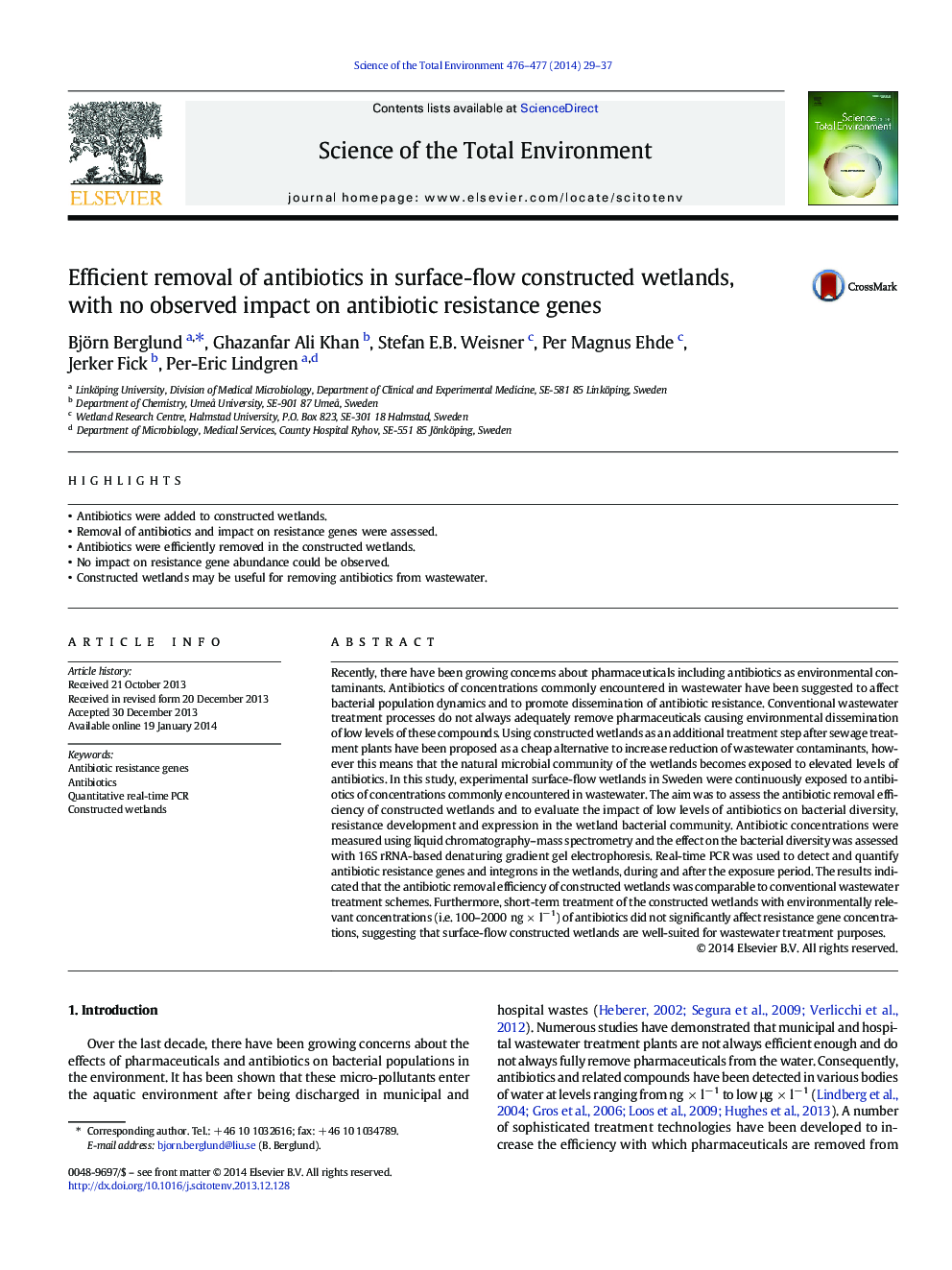| کد مقاله | کد نشریه | سال انتشار | مقاله انگلیسی | نسخه تمام متن |
|---|---|---|---|---|
| 4428518 | 1619789 | 2014 | 9 صفحه PDF | دانلود رایگان |
• Antibiotics were added to constructed wetlands.
• Removal of antibiotics and impact on resistance genes were assessed.
• Antibiotics were efficiently removed in the constructed wetlands.
• No impact on resistance gene abundance could be observed.
• Constructed wetlands may be useful for removing antibiotics from wastewater.
Recently, there have been growing concerns about pharmaceuticals including antibiotics as environmental contaminants. Antibiotics of concentrations commonly encountered in wastewater have been suggested to affect bacterial population dynamics and to promote dissemination of antibiotic resistance. Conventional wastewater treatment processes do not always adequately remove pharmaceuticals causing environmental dissemination of low levels of these compounds. Using constructed wetlands as an additional treatment step after sewage treatment plants have been proposed as a cheap alternative to increase reduction of wastewater contaminants, however this means that the natural microbial community of the wetlands becomes exposed to elevated levels of antibiotics. In this study, experimental surface-flow wetlands in Sweden were continuously exposed to antibiotics of concentrations commonly encountered in wastewater. The aim was to assess the antibiotic removal efficiency of constructed wetlands and to evaluate the impact of low levels of antibiotics on bacterial diversity, resistance development and expression in the wetland bacterial community. Antibiotic concentrations were measured using liquid chromatography–mass spectrometry and the effect on the bacterial diversity was assessed with 16S rRNA-based denaturing gradient gel electrophoresis. Real-time PCR was used to detect and quantify antibiotic resistance genes and integrons in the wetlands, during and after the exposure period. The results indicated that the antibiotic removal efficiency of constructed wetlands was comparable to conventional wastewater treatment schemes. Furthermore, short-term treatment of the constructed wetlands with environmentally relevant concentrations (i.e. 100–2000 ng × l− 1) of antibiotics did not significantly affect resistance gene concentrations, suggesting that surface-flow constructed wetlands are well-suited for wastewater treatment purposes.
Journal: Science of The Total Environment - Volumes 476–477, 1 April 2014, Pages 29–37
